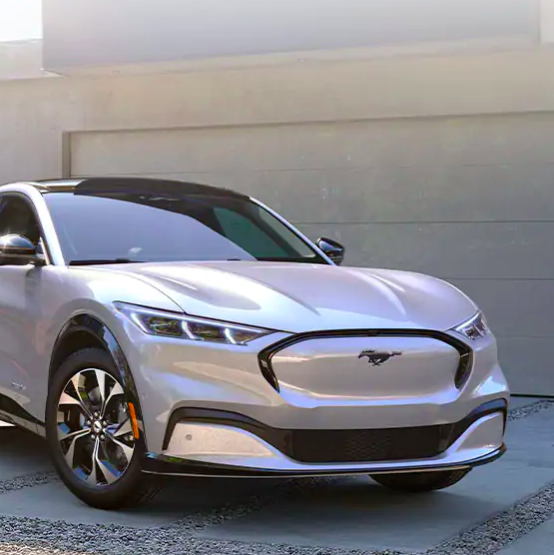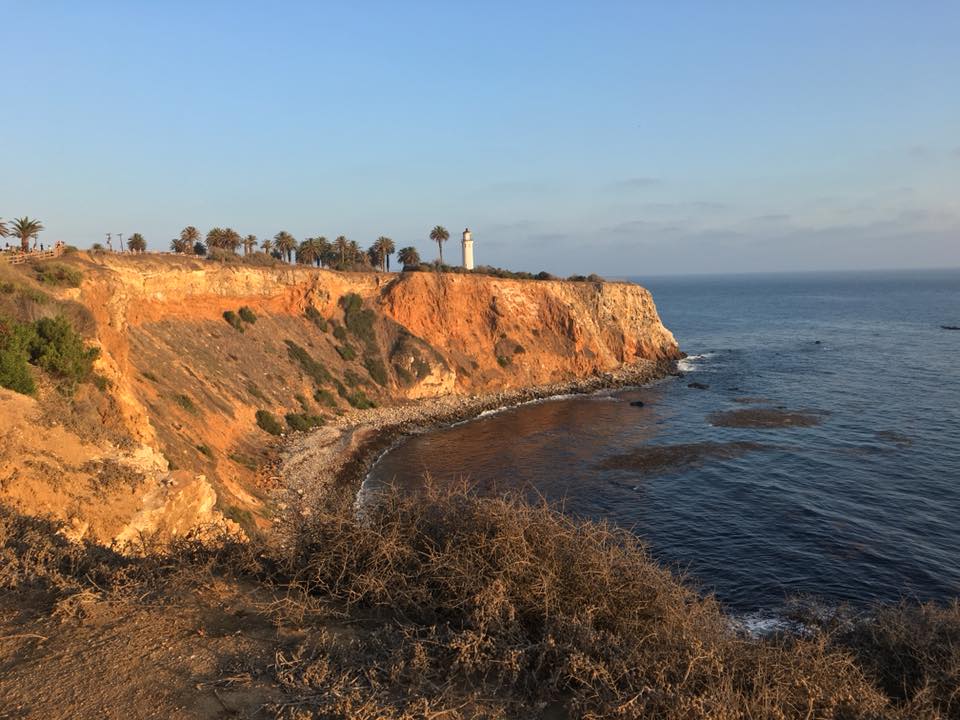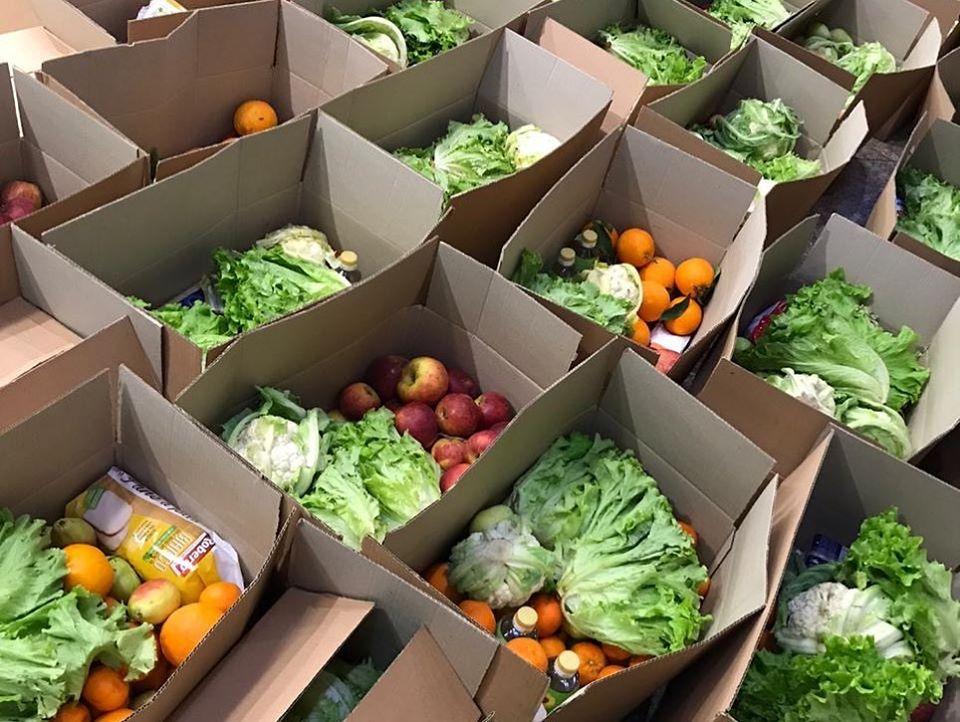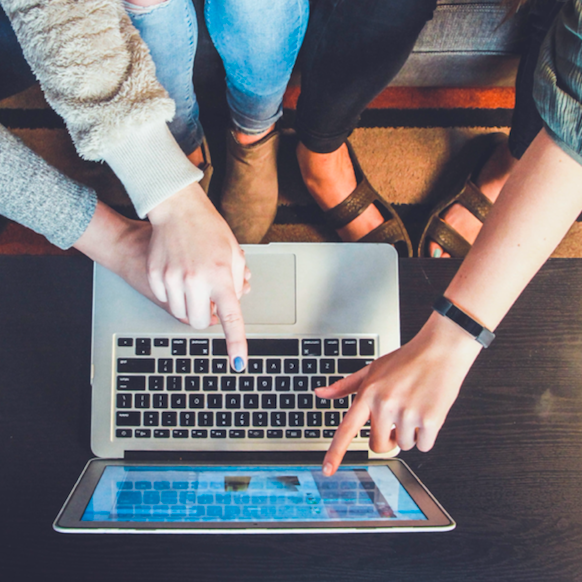Why Energy Efficiency is Key to Reducing Climate Change Risks


Energy efficiency is the workhorse of the clean energy world. Though solar and other renewable energy technologies usually take the spotlight, energy efficiency often works quietly in the background, making huge strides in lowering emissions without the fanfare.
The first-of-its-kind Energy Efficiency Impact Report, a joint effort of the Alliance to Save Energy, the American Council on an Energy Efficiency Economy and the Business Council for Sustainable Energy, takes a look at the society-wide impacts of energy efficiency investments, policies, and innovation. The report also evaluates potential energy savings in residential and commercial buildings, industry, and transportation if further investments are made in the coming years.
The findings are impressive. Since 1980, the report finds, without energy efficiency investments, energy consumption and related emissions would be 60 percent higher than they are and consumers would be paying $800 billion more per year in energy costs. Six policies were responsible for about 20 percent of those cuts, the most impactful being vehicle fuel emissions standards and appliance and equipment efficiency standards. Nevertheless, the report points out that the biggest opportunities are still ahead of us.
Such developments include the deployment of particular smarter technology, like digitalization, as well as artificial intelligence, cloud, and internet of things - all of which could be coupled with more responsive energy management. According to the report, additional investments in energy efficiency could lower U.S. greenhouse gas emissions by an additional 50 percent by 2050.
For those of us who have worked in energy efficiency for a long time, none of this is surprising. While it does not get the attention of flashier technologies, energy efficiency is a powerful weapon in the arsenal to combat climate change. The equation is simple: energy not used means emissions not generated. Efficiency technologies should be implemented first - if the overall demand for electricity is reduced, there is less need for building new power plants or installing new renewable capacity.
Efficiency has often been equated with sacrifice, but efficiency and conservation are not the same thing. Conservation means a change in behavior, as in thinking about turning off the lights when you leave the room, whereas efficiency refers to the technological changes that make energy consumption more efficient, thus lowering demand. Both are critical to lowering emissions, but efficiency requires investments in research, development and deployment by both the private and public sectors.
One thing not addressed in the report, nor in most efficiency reports, is the tremendous positive impact that energy efficiency investments have on water supplies. Just like every megawatt of energy not used means fewer carbon emissions, so it also means less water is needed to generate that megawatt of energy. Traditional forms of energy use tremendous amounts of water. Solar photovoltaic (PV) and wind power use negligible amounts, but energy efficiency technologies and processes use zero water. Reducing demand for energy to consume means reducing the need for additional water supplies to meet that demand.
We are seeing the effects of climate change already. Droughts and heatwaves, in particular, put pressure on our water supplies, and not just in direct ways. When the temperature rises, demand for air conditioning rises, causing energy demand to spike. That means more water is needed to generate more electricity, but there is less water available. The water may also be too hot or too low to effectively cool the power plants. Energy efficiency makes the equipment able to do the same or more with less electricity.
Energy efficiency is one of the most effective water conservation strategies there is, and the reverse is also true. Energy efficiency is a powerful greenhouse gas emissions reduction tool, but its role in reducing demand for water should not be ignored. It may not be the most glamorous thing to talk about it, but it is the most effective climate change tool we have for the energy sector. As we enter a new decade and face an increasing rate of climate change risks, greater investment in energy efficiency can potentially help mitigate those impacts.
Image credit: Markus Spiske/Unsplash
Three Clean Tech Trends to Watch In 2020


With the new year having arrived, now is a good time to gaze into the crystal ball and gauge some of the top clean tech trends that could help accelerate the decarbonization of the U.S. economy over the next 12 months — and what could hold it back, too.
Electric Vehicles — nope, scratch that and replace with electric buildings
Between Tesla’s Cybertruck and Ford’s Mustang Mach-E (pictured above), snazzy new electric vehicles (EVs) got loads of media attention as 2019 drew to a close. However, anyone hoping for EVs to have a significant impact on decarbonization in the U.S. will have to wait quite a while longer.
Edmunds and other auto industry analysts are predicting another strong turnout for overall car sales in 2020. That means new gasoline-powered automobiles will continue to flood the streets over the next 12 months. The popularity of gas-guzzling SUVs and pickup trucks will add to the hurt.
Meanwhile, electric vehicles will remain a minuscule part of the mobility market.
It’s a different story in the building electrification movement, where local jurisdictions can force the market for electric power simply by banning new natural gas hookups.
With overall electricity consumption flatlining, electricity stakeholders also have a bottom line incentive to help promote electric conversation for the estimated 70 million existing homes using gas, oil or propane.
That’s why building electrification tops the TriplePundit Top 5 list again, just as it did last year, and repeatedly at that. Look for more activity in this field in the months to come.
Energy storage good; long-duration energy storage better
One decarbonization issue for both electric vehicles and buildings is the continued reliance on fossil fuels to power the grid.
Energy storage can help solve that challenge, but there is still a problem.
The problem is the continued reliance on lithium-ion battery arrays for bulk energy storage. At best, these batteries can store energy only for a few hours. Currently, pumped hydro is the only option for storing wind and solar energy in bulk over long periods.
The solution is to invent new kinds of economical bulk energy storage that last ten hours or more.
Ten hours is the goal set by the Department of Energy for long-duration energy storage. The federal agency has been funneling millions into supporting new storage technology with the ultimate aim of reducing, if not eliminating, the need to build new gas power plants.
Long duration energy storage could also help relieve transmission bottlenecks in some areas, which would help avoid the cost of new grid upgrades.
What’s needed now is support for long duration R&D from the private sector. It has been slow in coming, but Wood Mackenzie’s GreenTech Media foresees an avalanche of investment in 2020 and we agree.
Bonus trend: hydrogen, hydrogen, hydrogen
Hydrogen fits neatly into the category of long duration energy storage, but it deserves its own section because it carries widespread implications for accelerating wind and solar development.
For those of you new to the topic, hydrogen is a zero-emissions fuel that has innumerable applications in industry, including food processing. Its use in transportation and energy storage is also increasing.
Hydrogen also made the TriplePundit Top 5 list last year on account of the emergence of renewable hydrogen, sourced from water rather than natural gas.
Last year the big news was also all about renewable hydrogen for fuel cell vehicles, including trucks and other heavy duty equipment as well as boats and aircraft.
This year the more interesting activity will occur in the area of stationary energy storage in general, and long duration energy storage in particular.
Maine could be one state to watch. Policy makers in the state are currently eyeballing a proposal for a new hydrogen energy storage system that would forestall the need to upgrade its transmission system.
Come to think of it, Maine has remained out of the clean tech spotlight for too long. The state is swimming in renewables including wind, solar, biomass, biogas, and hydropower, and it just might be ready to be center focus as governments and business sort out how to decarbonize the U.S. economy.
Next week, we will continue this discussion by zeroing on new developments in the renewables sector you should keep your eyes on in the coming year.
Image credits: Ford Motor Co.
6 Off-Beat, Random and Sustainable Things to Do in California


2020 has finally landed on our calendar, and with this new year, comes a new batch of new year’s resolutions, goals to kick into high gear for 2030 . . . and for some of us, January 1 means we need to plan our vacations that will occur at some point during the next 365 days.
A trip to the Golden State this time of year often means enjoying warmer temperatures in Southern California’s beach towns or spectacular skiing in the Sierra Nevada Mountains. But as a native son, I thought I’d ring in the new year by giving you a few ideas of what you can do if you need a break from the state’s 40 million people, notorious traffic and deathly real estate prices.
If you want to veer off the beaten path, contribute to local businesses, score some “out there” sustainability ideas or support local artisans (or any combination of these), here are just a few ideas for you to check out the next time you venture this way to visit family, attend a conference or come out on business.
Forestiere Underground Gardens, Fresno
It was a love story for the ages: Sicilian immigrant Baldassare Forestiere arrived in the San Joaquin Valley in 1901 to become a citrus farmer. The problem was that the land he bought was a massive patch of nearly impenetrable hardpan, which meant it was next to impossible to plant anything. So instead, Forestiere dug underground, kept digging underground, and dug some more. By the time he was 44 years old, he had excavated a network of tunnels spread across 10 acres in his quest to provide a comfortable home for his bride.
Sadly, Forestiere never married; but he did leave a legacy with an impressive labyrinth of rooms, grottos and gardens, where he could grow everything from citrus to pomegranates to grapes. Forestiere certainly gave us ideas on how to cope with climate change and the impact air conditioning is having on the planet – just build underground, and do it the most low-carbon way possible: by pickax and hand. His farming methods are also a workman's comp attorney's nightmare - there were no ladders to risk falling off of, as when it came time to pick fruit, one only had to bend over at ground level.
Members of the Forestiere family currently operate what’s left of this subterranean masterpiece.

Photo: An orange tree twists to the sky at Fresno's Forestiere Underground Gardens
Glass blowers and their art, Benicia
California history buffs know of Benicia, about 45 minutes by car or an hour ferry ride northeast of San Francisco, as California’s state capital briefly in the 1850s before the state's legislature moved permanently to Sacramento.
Locals in the town of 27,000 pride themselves as being an oasis of calm in the hectic Bay Area, and, of course, for its colony of artisan glass blowers. Many of the artisans who work in the studios in Benicia’s downtown were inspired or trained by the Murano glass studios in Venice. If you have a few hours to spend after visiting San Francisco on your way to the Wine Country, consider visiting this cluster of workshops nestled along the Carquinez Strait. Benicia’s downtown is also a true Main Street – at last glance there are no national chains on the main drag.
Pick your own fruit, Bishop
Most people visit the Owens Valley and Eastern Sierras to go skiing at Mammoth. Bizarre geological wonders such as Mono Lake and Devils Postpile National Monument are also big draws during the summer month. The town of Bishop, population 3,900, bursts at the seams during peak fishing season.
But if picking your own fruit is your way of getting in touch with the earth, then consider visiting Apple Hill Ranch just outside of Bishop. Depending on the time of year, cherries, peaches and apples are yours for the pickings. The farm’s Facebook page keeps its fans posted about the latest fruits (and vegetables!) on offer.
There’s no shortage of pick-your-own fruit options in California – this chaotic web page is a joyful time suck if you’re curious about other foraging options, whether you are hankering for berries around Monterey Bay or stone fruit in the Central Valley.
Free range zebras, San Simeon
Yes, this makes about as much sense as hippos in Colombia, but a weird twist in history could mean long-term salvation for these majestic animals - and unlike the Hippopotamus amphibius, Pablo Escobar wasn't involved. Another nefarious character, however, was involved with this scheme.
Along Highway 1 between Cambria and Sam Simeon, home to world renowned Hearst Castle, is a herd of zebras. This oddity was due to the early 20th century publishing giant William Randolph Hearst, who built this estate get away from it all and co-host soirees with his mistress. Visitors to Hearst Castle drove through what was by most estimates the world's largest private zoo at the time. By the late 1930s, financial difficulties forced Hearst to sell or give away most of his prized exotic animals. Others, including the zebras, were set free.
Today, you can watch the zebras graze along the east side of Highway 1, roaming around obliviously while visitors gawk from behind the high chain-link fence. After passing Cambria while driving north on 1, just look out for the animal prints to your right.

Photo: Zebras roaming near San Simeon, CA (Image credit: vgm8383/Flickr)
Gaze at the sunset at Point Vicente, Palos Verdes
Are you in the Los Angeles area with only a few bucks in your pocket and a maxed-out credit card? Then get a ride to Point Vicente, where the lighthouse first started warning ships about the treacherous waters around Palos Verdes in 1926. Come here in the late afternoon or early evening depending on the time of year, as the cliffs will dazzle you with shades of gold and you’ll happily forget that you’re in a metropolitan area home to a zillion people. Point Vicente is between Redondo Beach and Long Beach, two communities that offer a nice change of pace from the City of Angels.

Photo: Point Vicente Lighthouse, Palos Verdes, CA
Shields Date Farm, Indio
Most visitors come to the Coachella Valley for a certain musical festival. Others flock to Palm Springs for the stellar winter weather, the White Party, golf, mid-century architecture, the tennis tournament at nearby Indian Wells, cosmetic surgery or all of the above. The more adventurous check out the Salton Sea and nearby oddities such as Slab City.
Somewhere in between, in and around Indio, is the region’s thriving date industry. The history of how dates ended up in these parts is certainly a colorful tale. Many of these date palm orchards are organic. And while there is some controversy over date growers’ impact on local groundwater supplies, these date palms are among nature’s wonders – they can bear fruit for decades, and have an average lifespan of 200 years.
Then there is Shields Date Garden. If you are into Route 66 kitsch, this is your place, though in fairness, the restaurant on the premises is pretty darned good. You’d be remiss if you don't take time to watch the film “The Romance and Sex Life of the Date,” but you can always watch the film on YouTube. Plus, we’re a little late to mention this, but there is also The Walk, which takes you through the 12 episodes in the life of a certain historical figure named Jesus of Nazareth.
Image credits: Leon Kaye
How Brands Communicated Purpose in 2019


This past year, consumers, investors and employees demanded that companies enact change and demonstrate purpose beyond generating profit.
With 2019 about to wrap, we here at TriplePundit and 3BL Media look back at the brands that rose to meet stakeholder expectations and the interesting ways they communicated their good work on environmental, social and governance (ESG) topics.
Brand experiences take communicating purpose to the next level. When done right, they create a deep emotional bond between audiences and brands. But how does a company execute a brand experience authentically? For United Airlines, whose purpose is "Connecting People. Uniting the World," it meant hosting its first-ever Drag Queen Brunch to celebrate the diversity of its employees and the people they serve. To attend the event, participants donated air miles to United's charity partner, The Trevor Project, a nonprofit that provides intervention and suicide prevention for LGBTQ youth.
More and more businesses have chosen to lead with purpose by aligning with the United Nations’ Sustainable Development Goals (SDGs). With only a decade left to meet the ambitious targets laid out in the SDGs, businesses have to do the work and communicate their progress. Procter & Gamble has done just that. In October, P&G announced it had already reached its 2020 goal of purchasing 100% renewable electricity in the U.S. and Canada. This accomplishment signifies a strong start as P&G looks toward its ultimate goal of purchasing 100% renewable electricity globally by 2030.
Brands are living in woke times—and employees know it too! Now, recruiting and retaining top talent hinges on addressing equal opportunity and accountability to build an inclusive workplace. Sharing what a company is doing to become an employer of choice is paramount to having success. Bacardi did that during its Spirit Forward Women Empowerment Series by exploring timely topics such as representation, innovation and disrupting the status quo. The series featured a diverse set of voices and aimed to provide the tools, solutions, relationships and know-how to unleash the potential and advancement of women in hospitality.
In 2019, brands were expected to take stands on issues central to their business. With this becoming the new normal, how a brand break through the noise? Take a page from Timberland's book. The outdoor lifestyle brand launched its largest-ever global campaign, "Nature Needs Heroes," which aims to plant 50 million trees around the world by 2025 and calls on consumers to join the movement by taking small, simple actions for a healthier planet. Harnessing the brand’s passion for nature and the energy of the fashion world, the campaign celebrates 12 eco-heroes who are making lasting change for the environment and their communities. Since launching, the initiative has come to life through robust media activations across print, digital, out of home, social media and PR. Timberland is also engaging the global community to be heroes for nature through a series of tree planting and greening events.
Marketers have long been told that an average user's attention span is eight seconds. Many best practices suggest making content as concise as possible. HP defied this logic with a long-form story on how iOrthotics is using its 3D printers to help patients gain the ability to walk or improve their mobility.
The story follows Christopher, an 8-year-old boy from Australia, as he takes his first steps since he was weakened by a stroke. Dean Hartley, podiatrist and co-founder of iOrthotics, sums it up best when he says, "This is why we do it. You see that smile on his face. Then you see the smile from the parents. It’s amazing."
Previously published by 3BL Media.
Image credit: HP
2019: A Momentous Year for World Central Kitchen


Founded in 2010 by chef José Andrés, World Central Kitchen (WCK) hit its stride in 2017 when Andrés’ action in Puerto Rico after Hurricane Maria ravaged the island that fall. Its mission: ensuring citizens under duress could at least have one hot meal a day no matter how dire the circumstances.
Andrés launched the massive relief effort with credit cards and the $10,000 he had in his pockets. Within days, he was overseeing an operation that enlisted food trucks, culinary schools, large restaurant distributors, and some very well-known U.S. nonprofits in what turned out to be a $400,000-a-day relief effort. Since then, this NGO has offered lessons to both businesses and relief organizations on how to move fast and get things done.
This work, done at a frenetic yet effective pace, has not stopped: it has only scaled up. At the beginning of 2019, with D.C. mired in the middle of a federal government shutdown, WCK served 100,000 meals in the national capital – and that effort was replicated nationwide across 400 restaurants in 35 states.
February saw WCK ramp up its efforts in the southern hemisphere as the Venezuelan refugee crisis surged along the country’s border with Colombia. In the border town of Cúcuta, Colombia, more than 750,000 meals have been served as of yesterday. This past summer, WCK began relief operations within Venezuela as well.
That work continued across the Atlantic and to the Horn of Africa, where a month later, Tropical Cyclone Idai hit Beria, Mozambique, killing over 1,000 citizens and upending the lives of another 3 million. Within days, WCK started operations in the country, remaining active through May as the organization’s staff and volunteers served up 350,000 meals.
The work continued through the spring and summer, with wildfires and an earthquake in California; flooding in Nebraska and South Dakota; Hurricane Dorian in the Bahamas; and an earthquake last month in Albania.
In addition to serving those hot meals, WCK runs several programs, including a $50 million Climate Action Fund launched earlier this year. That program seeks to ensure WCK’s fast action on the ground, from California to the Bahamas, can continue without a hitch. “WCK cooked and delivered hot meals every day of 2019,” Andrés said in an emailed statement, “and we have experienced a growing need for our work as we face increasing climate-related disasters and refugee crises affecting the most vulnerable.”
Learn more about WCK’s efforts, as well as ideas on how you can help, here.
Image credit: WCK/Facebook
Seven Trends Dramatically Reshaping Corporate Philanthropy


These days, it’s not if a disaster happens anymore, but when. And when there’s a need, you want to be there, on the front lines, NOW.
Urgency is more than being purely reactive, however. It’s about aggressively going after the right causes. You have an imperative to direct your dollars strategically to emerging needs where they can provide the most positive impact — while simultaneously aligning with your organization’s missions and values.
The demand for immediate social impact is ubiquitous, and we certainly don’t need to inform you how great the demand is for corporate giving. Our shared world is rife with want and chaos and emergencies. The need is everywhere. Worthy, urgent causes roar up literally overnight. And thankfully, there’s people like you, and organizations like yours, who jump in and help in big ways. Whether through grantmaking, employee donations, or volunteer programs, the challenges are the same.
How can you best mobilize your resources, generate maximal impact, and deliver that impact as quickly to the point of need?
You are a powerful catalyst for giving.
During this webinar hosted by HR.com earlier this month, Seven Trends Dramatically Reshaping Corporate Philanthropy, you’ll see how Agile Social Impact can help solve the issues posed by those trends outlined. When you are being agile as an organization, you can quickly achieve impact in your corporate social responsibility programs. And by providing agility for your employees, they can deliver impact to the causes that matter to them most.
Key Takeaways:
- What are the seven trends reshaping corporate philanthropy today and how to prepare for 2020
- How to engage employees at all levels through charitable donations and volunteerism
- How to leverage technology to maximize agile social impact with your corporate philanthropy programs
Be sure to watch here: The Forces Dramatically Reshaping Corporate Philanthropy
Originally published on 3BL Media News.
Image credit: John Schnobrich/Unsplash
The ESG Trends You Need to Know About for 2020


Yes, it’s true, year after year: most of the ESG (environmental, social and governance) predictions made in January for the upcoming year will be off come December. Nevertheless, 2020 may be an easier year to gauge than most.
After all, we have a volatile presidential election coming up here in the U.S. – one that will have just about every superlative description imaginable tagged to it. Employees will continue to make their voices heard on a bevy of social and political issues, and companies will scramble to respond in kind. Plus, many consumer trends are simply unstoppable.
Finally, the fact that many companies have only 366 days (thanks to the leap year, there’s an extra 24 hours!) to meet their 2020 goals means we’re about to embark on one heck of a bumpy ride. Expect a lot of sustainability cans to be kicked down the road.
Healthcare becomes more important to companies’ employee engagement efforts
Another year, another 52 weeks of endless healthcare debate and another dollar – or shall we say dollars, as the chances are your health care premiums have ticked upward in price yet again. Those rising costs, and the stress many workers feel because of this trend, will nudge more employers to become more creative about how they provide healthcare benefits. Watch for more companies to encourage employees to take advantage of mental health care benefits (or finally, start offering them); in addition, keep an eye out for options such as home health care, which is way cheaper, and often more comfortable, than hospital stays. As medical marijuana and CBD become more mainstream and accepted, more HR professionals will become open to figuring out how to include such treatments as benefits, too.
More companies will encourage voting, and give employees time off cast their ballots
Speaking of elections, we’re in for a chaotic primary and election season to launch the 1920s on this side of the pond. During the last midterm cycle, we saw more companies strive to get their employees interested in voting; a few companies, such as Patagonia, have made it a policy to give their employees time off to vote. Keep an eye out for more companies deciding to do the same.
The circular economy will hit a snag
Here’s my Debbie Downer prediction for 2020: circularity will flop. Indeed, the circular economy was a big story during 2019. Unfortunately, this movement faces a huge problem: it’s more story than substance. Yes, there have been countless initiatives, partnerships and goals, but there are several fundamental problems that can make all this talk more hype than reality. First, the cheap cost of fossil fuels gives companies, and consumers, little incentive to change their ways. The plethora of raw materials used to make just about everything from packaging to household goods means we’ll still be consuming linearly, not circularly. And most of us are just not hard-wired to accept that magic R-word: reuse. The many barriers mean the circular economy is more likely to struggle to gain traction instead of scaling up in the coming year.
Meanwhile, China’s ongoing ban of plastic waste imports means there is still too much waste out there for any company or municipality to manage effectively. And piling atop of the single-use plastics problem, the reality that the cheap cost of many products, from clothing to consumer packaged goods (CPG) means there is no incentive for consumers to change. It will take heavy-handed legislation (unlikely due to the surge in populism worldwide) or a massive geopolitical jolt leading to sky-high fossil fuel prices (more likely due to the surge in populism worldwide) to shock companies and citizens into taking action on this front.
Onto food: plant-based seafood will make a splash
If 2019 was the year of plant-based foods – and by that we mean fake meat going mainstream with burgers and tacos – then 2020 will be all about plant-based seafood. Read Sarah Hutcherson’s excellent overview of how 2019 was the foundation of this trend. While we’ll see more effort to ensure transparency and ethics in the global seafood supply chain, the sad reality about our oceans is that we’ll have to turn increasingly to cell-based and in the near term, plant-based imitation fish and shellfish options.
Fancy an organic non-alcoholic drink with that plant-based slider?
Millennials are praised and mocked at the same time for countless trends: on one hand they are applauded for raising awareness of what’s in our food supply – and then we turn around and blame them for killing off old standbys like the Amtrak dining car. But let’s face it, one shift for which we should be thankful is the fact that more of them are shying away from booze – and making the phrase “No thanks, I don’t drink” one that is more accepted than mocked. Global beverage companies will have to respond in kind – so watch for more creative alcohol-free beers, wines and spirits to hit the market . . . with a fair share organic, free trade (and perhaps free range?) choices.
Finally, on governance: shareholders will want more say on board diversity
The news has long been out: boards that are more diverse tend to perform better – largely because you avoid the timeless problem of a posse of old white yes-men agreeing on things with blinders on. And while California’s “quota law” on gender diversity has generated its share of controversy, the stubborn fact companies will face is that shareholders, including those persistent activist investor groups, will be pressuring companies to have boards that look less like the cast of that 1957 classic film, 12 Angry Men.
Image credit: Leon Kaye
What Waste? Domtar Plant Achieves Its Zero-Waste Goal


When Mark Clack joined Domtar in 2016 as the manager of the Delaware, Ohio, personal care facility, he noted that an impressive 80 percent of the manufacturing byproducts was being beneficially used or recycled. “Given Domtar’s commitment to sustainability, and my experience helping a microbrewery I previously worked at in California achieve zero waste to the landfill, I saw the opportunity to do the same in Delaware.”
In 2018, Clack’s goal for the Delaware facility became a reality. Delaware became the second Domtar manufacturing facility to reach the enviable milestone of sending zero waste to the landfill. Our facility in Aneby, Sweden, was the first.
This began with source reduction and keeping the recycling stream clean. Repurposing, recycling and waste-toenergy took care of the rest.
A key step was the reduction of scrap being generated by switching to larger-diameter rolls of raw material. The larger rolls run longer on the machine, resulting in fewer roll cores for disposal, saving time and improving efficiency of the line.
“Another important step was making it easier for colleagues to separate materials for recycling,” said administrative assistant, Vickie Bowles. Recovery stations were positioned closer to work areas so that sorting and recycling require less physical effort. Better signage and education also helped encourage participation.
Spent cores with remaining unusable raw material are now collected and shipped to InRETURN, an Ohio non-profit that employs people with traumatic brain injuries. Employees there reuse the material to make absorbent products such as dog beds, packaging materials, and more.
Non-woven materials, super absorbent polymer, paper, plastic and metal are separated at the facility and sent to specialized recycling facilities in the state.
Beneficially used or recycled 86 percent of the 19,812 metric tons of manufacturing byproducts generated at our personal care facilities in 2018.
The remaining residuals, including organic materials, are sent to a facility that generates clean energy for Indianapolis, Indiana.
Now all byproducts have found a second calling, keeping valuable resources cycling through the economy. Working together, our colleagues in Delaware have reduced the facility’s environmental footprint, doing their part to ensure a better future.
Read the 2019 Domtar Sustainability Report.
Previously published in the 3BL Media newsroom.
Image credit: Domtar
After COP25, More U.S. States and D.C. Coordinate on Climate Action


Twelve U.S. states and the District of Columbia have just launched a coordinated effort to reduce greenhouse gas emissions related to transportation in the Northeastern U.S. and part of the Mid-Atlantic, too. The effort has enlisted vigorous support from businesses as well as environmental groups. It is yet another indication that state-level policy can push forward on climate action, even when the federal government refuses to act - and after COP25 concluded with disappointing results.
Post COP25, a climate action plan with broad support
The new initiative is the latest project of a state-level collaboration called the Transportation & Climate Initiative (TCI), which formed in 2010.
Along with Washington, D.C., the 12 state members are Connecticut, Delaware, Maine, Massachusetts, Maryland, New Hampshire, New Jersey, New York, Pennsylvania, Rhode Island, Virginia and Vermont.
Under the new initiative, these states will commit to a regional greenhouse gas cap-and-invest program that aims at transitioning to a “more sustainable, resilient, lower carbon transportation sector,” with the end goal of providing "more transportation options, improved air quality and public health, and economic opportunity.”
There is still a way to go before the initiative kicks in. Currently, TCI is asking for public comment on a draft Memorandum of Understanding for the climate action plan, with a deadline of February 28, 2020.
Among the questions TCI aims to answer through the public comments are:
“What factors should TCI jurisdictions consider when setting the starting level and the trajectory for a regional cap on carbon dioxide emissions from transportation fuels?”
“How should the compliance period be structured to provide needed flexibility, while ensuring environmental integrity?”
“What factors should TCI jurisdictions consider when designing stability mechanisms for managing uncertainties regarding future emissions and allowance prices?”
Broad support for climate action
As may be expected, the new initiative has earned widespread praise from environmental organizations as well as green investor groups like Ceres, though some argue that it does not go far enough.
Business stakeholders in the region are also advocating for the new initiative.
Familiar names in the sustainability field like Autodesk, Etsy, and Ikea are among the leading business stakeholders contributing to a December 17 press release from Ceres in support of the TCI climate action plan, along with lesser known companies like Vermont-based King Arthur Flour.
King Arthur draws attention to the rural economic development angle, stating that “the opportunity to invest in electric vehicle infrastructure, provide rural communities with more efficient and clean transportation solutions, and combat climate change makes this proposal a win-win.”
Of particular interest is support from energy stakeholders. In a joint statement of support, Exelon, National Grid and PSEG argue that accelerating climate action is both necessary and doable, considering that low carbon alternatives are available now. Exelon is also among the growing number of companies to put an internal price on carbon as well.
These energy companies anticipate bottom line benefits from distributing the fruits of a low carbon economy, especially as it pertains to improving services across the board.
In their joint statement, they affirm TCI’s goal of a cap-and-invest policy that steers investment toward “communities that are underserved by clean transportation alternatives, disproportionately bear the costs of the current transportation system, or suffer disproportionate impacts of vehicular pollution and climate change.”
Laying the groundwork for climate action
Of course, the new TCI initiative did not pop out of thin air.
Over the years, state-level policy makers in the Northeast have been aggressively pursuing climate action on other fronts as well.
Several TCI members are also founding members of the groundbreaking 2005 Regional Greenhouse Gas Initiative, and the coastal members are part of the 2010 Atlantic Offshore Wind Energy Consortium. TCI members also spearheaded the Multi-State Zero Emission Vehicles Action Plan in 2014.
Elections have consequences
For businesses in some states that are not fully engaged on climate action, the new TCI plan represents an opportunity to make up for lost time. In that regard, New Jersey illustrates how one state-level leader on climate policy can make all the difference.
New Jersey was a founding member of the Regional Greenhouse Gas Initiative, but former Governor Chris Christie summarily pulled out of the agreement after he took office in 2010. He also pulled New Jersey out of, or slow-walked, every other multi-state climate action collaboration effort in the Northeast.
After Christie left office in 2018, New Jersey revived its climate action efforts. As one of his first acts in office, incoming Governor Phil Murphy signed an executive order that helped kickstart the state’s moribund wind power industry.
Among other initiatives, New Jersey has also joined TCI and the International ZEV Action Plan, and it is scheduled to rejoin the Regional Greenhouse Gas Initiative in 2020.
The lesson is clear: if business stakeholders in other regions are to reap the bottom-line benefits of a cap-and-invest system, they will need to lobby their state legislators to act.
Unfortunately, in many legislative districts climate change is still a hot-button issue that elected representatives dare not touch. In that kind of environment, it is risky for leading businesses to openly rally voters and partner with grassroots organizations in support of climate action.
Nevertheless, over the past 10 years public opinion has been slowly swinging in the direction of action on climate change.
With careful messaging that focuses on the community benefits of climate action, trusted brands can help sway hearts and minds — and votes — to help accelerate the demand for state-level action on climate change.
Image credit: Devon Wellesley
2019 at Booz Allen: Celebrating Diversity and Inclusion, Strengthening Our Commitment


From commuter benefits that support health and the environment to recognition as an LGBTQ Business Leader, Booz Allen reinforced its commitment to its employees and the greater community in 2019. The firm also solidified its reputation as a workplace of choice with its eighth year on Fortune magazine’s “World’s Most Admired Companies” list.
Milestones, accolades, and highlights follow.
Strengthening our commitment—and breaking new ground
In 2019, Booz Allen celebrated several anniversaries and firsts, including:
-
The 20th anniversary of GLOBE, Booz Allen’s LGBTQ+ employee forum .
- A fifth year with a perfect score on the Disability Equality Index (DEI)
- The firm’s first-ever Mental Health Corporate Excellence award, which recognizes corporations whose programs, accommodations, and training support mental health in the workplace.
A place where professionals can thrive
Beyond just building a diverse workforce, Booz Allen is committed to offering a culture and environment of inclusion that fosters respect and opportunity for all of the firm’s employees.
In 2019, these individuals included:
- Booz Allen Executive Vice President Anthony “Tony” Mitchell, recognized as the 2019 Black Engineer of the Year (BEYA). Since the BEYA award was established in 1986, more than 10,000 engineers have been nominated but only 33 have won the honor of the title.
- Sian Lewis, a specialist in deep learning, natural language processing, and predictive analytics, recently received an award in the “Data” category in the 2019 DCFemTech awards. She’s also a committed advocate for LGBTQ+ issues and greater diversity and inclusion in the tech world. Learn more about Sian’s data science work in Minority Engineer Magazine’s Fall, 2019 issue!
At Booz Allen, Lewis says: “I’ve been able to combine both of my passions: data science and the ability to do social good in a big way.”
Be sure to lean more about diversity and inclusion at Booz Allen.
Previously published in the 3BL Media newsroom.
Image credit: Julian Lozano/Unsplash